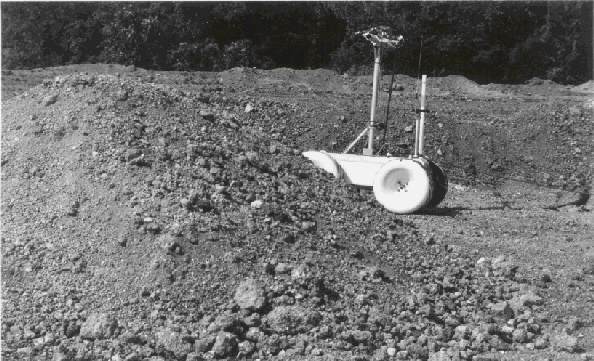 LRD Navigation Group
LRD Navigation Group LRD Navigation Group
LRD Navigation Group
Carnegie Mellon researchers are creating the prototype for a new lunar rover that can navigate rugged terrain autonomously and under supervisory control over thousands of kilometers of terrain. As part of this Lunar Rover Demonstration (LRD) project, the LRD Navigation Group develops the navigation system of the rover.
Capabilities are needed to enable driving the rover over varied terrain and to safeguard its operation. Time-delayed teleoperation is laborious and upredictable for remote operators. A better mode of operation is supervised teleoperation, or even autonomous operation, in which the rover itself is responsible for making many of the decisions necessary to maintain progress and safety. To date, Carnegie Mellon researchers have concentrated on semi-autonomous and autonomous operation, and we have already demonstrated that our navigation system can drive the rover over more than a kilometer of outdoor, natural terrain.
Here is more information about the project:
The lunar rover is just one component of the larger Lunar Rover Initiative (LRI), whose goal is to launch and land a lunar mission within the decade. The Initiative involves people at Carnegie Mellon, NASA, Sandia Laboratories, LunaCorp and other government and commercial groups. The Initiative's first mission occurred in July of 1994, when the walking robot, Dante II, explored the crater of Mt. Spurr, an active volcano in Alaska, demonstrating the future potential for exploring inhospitable planets.


LRD Navigation Group - skoenig@cs.cmu.edu (last updated in March 1995)